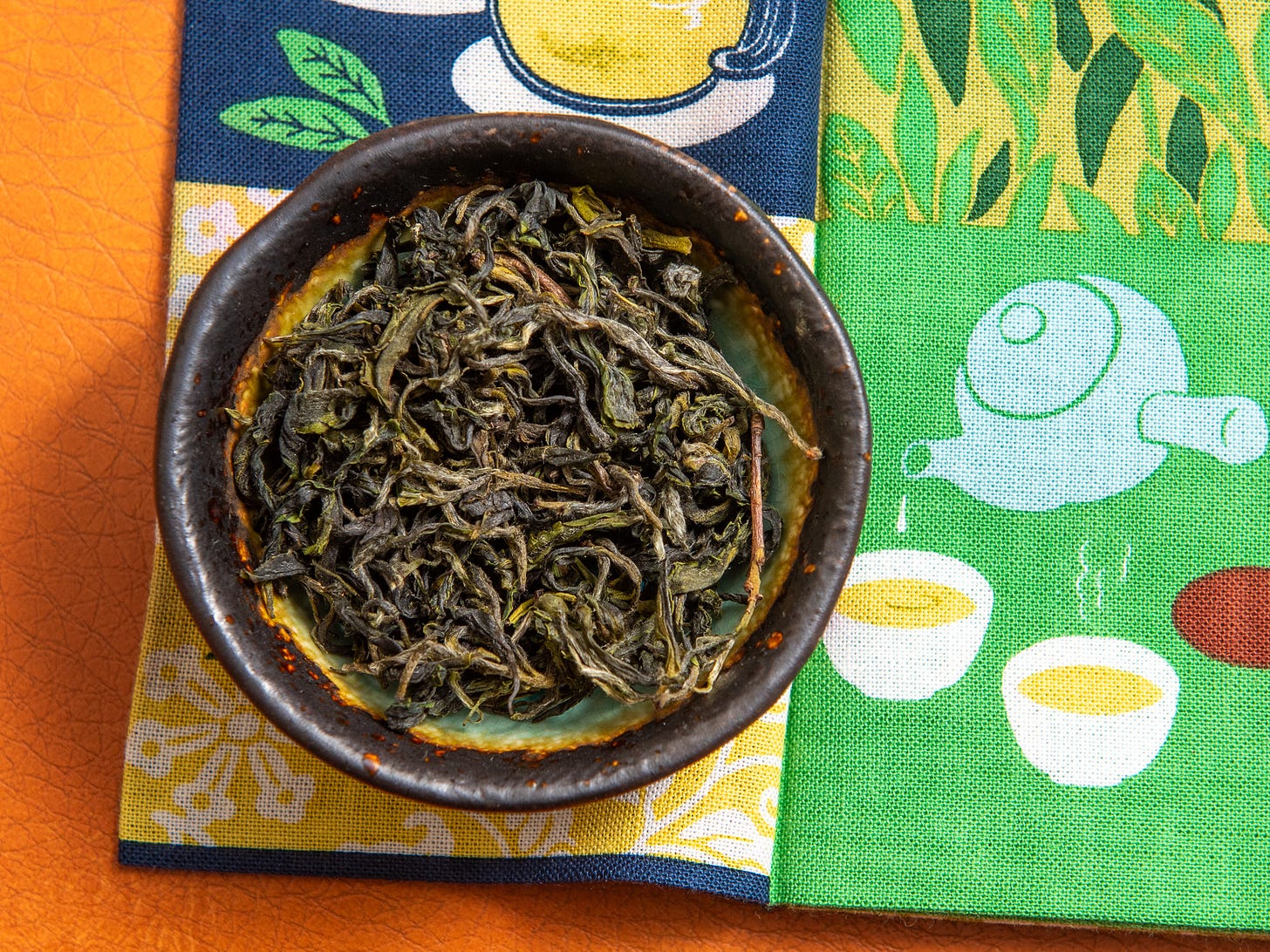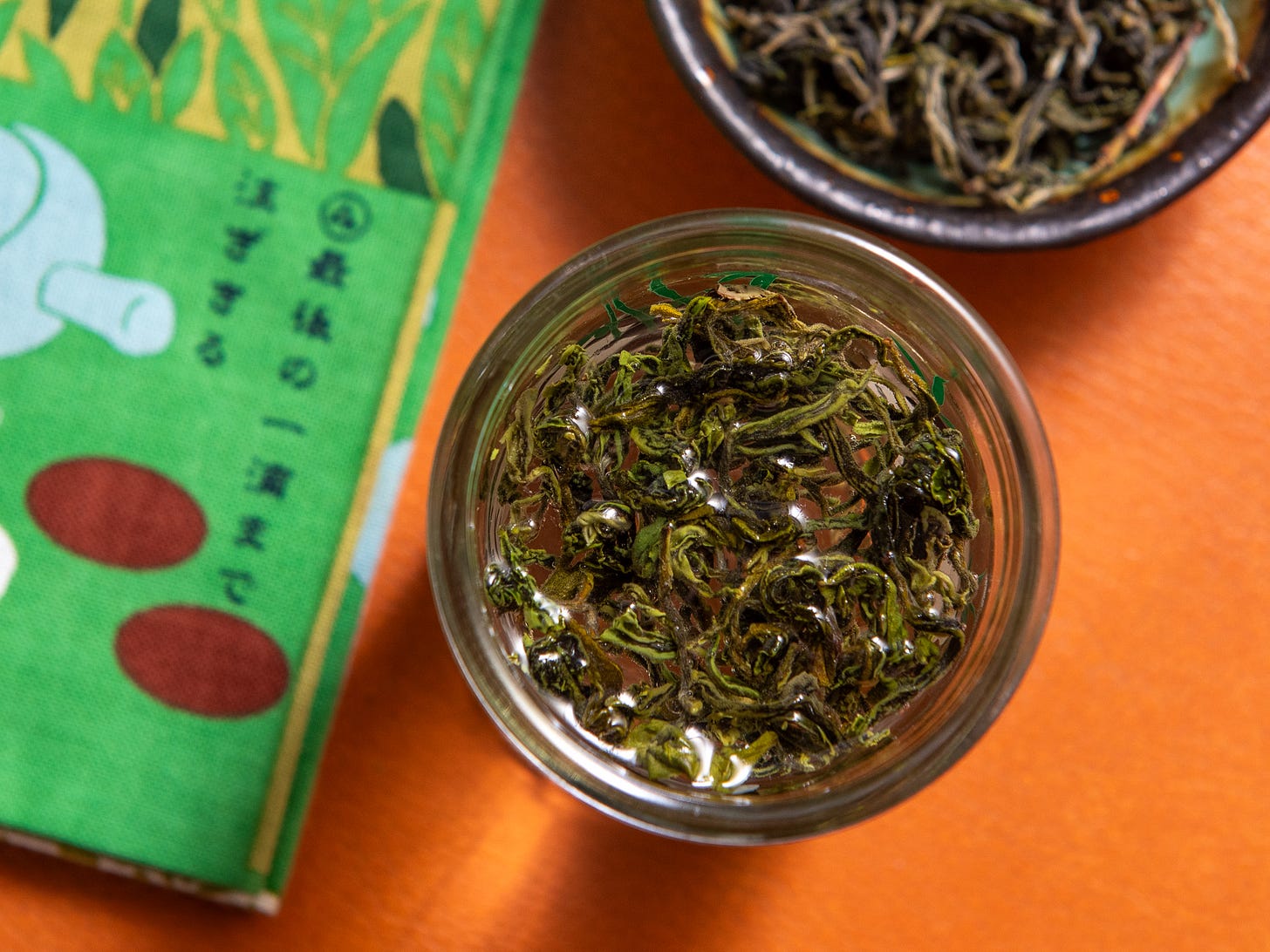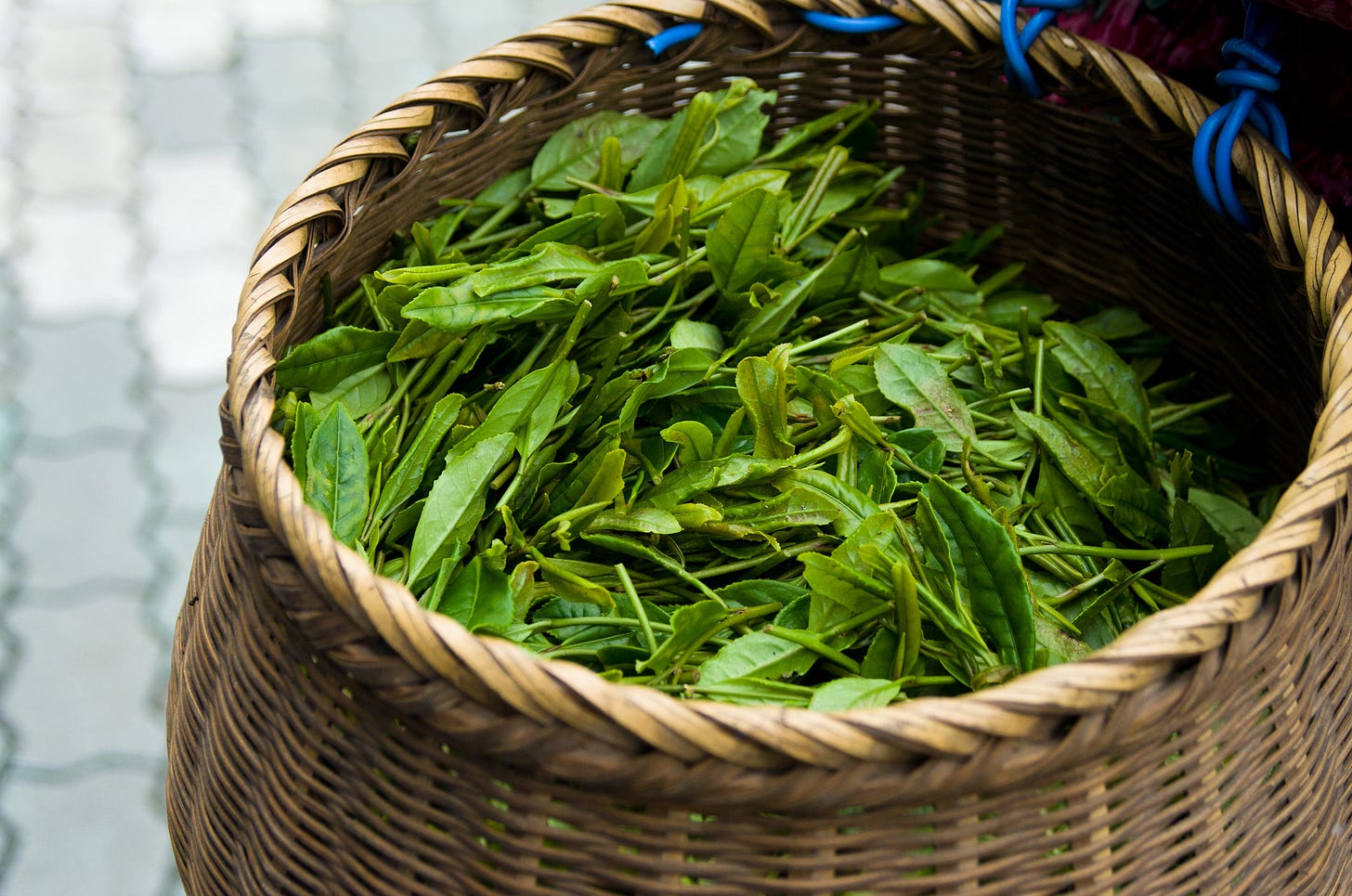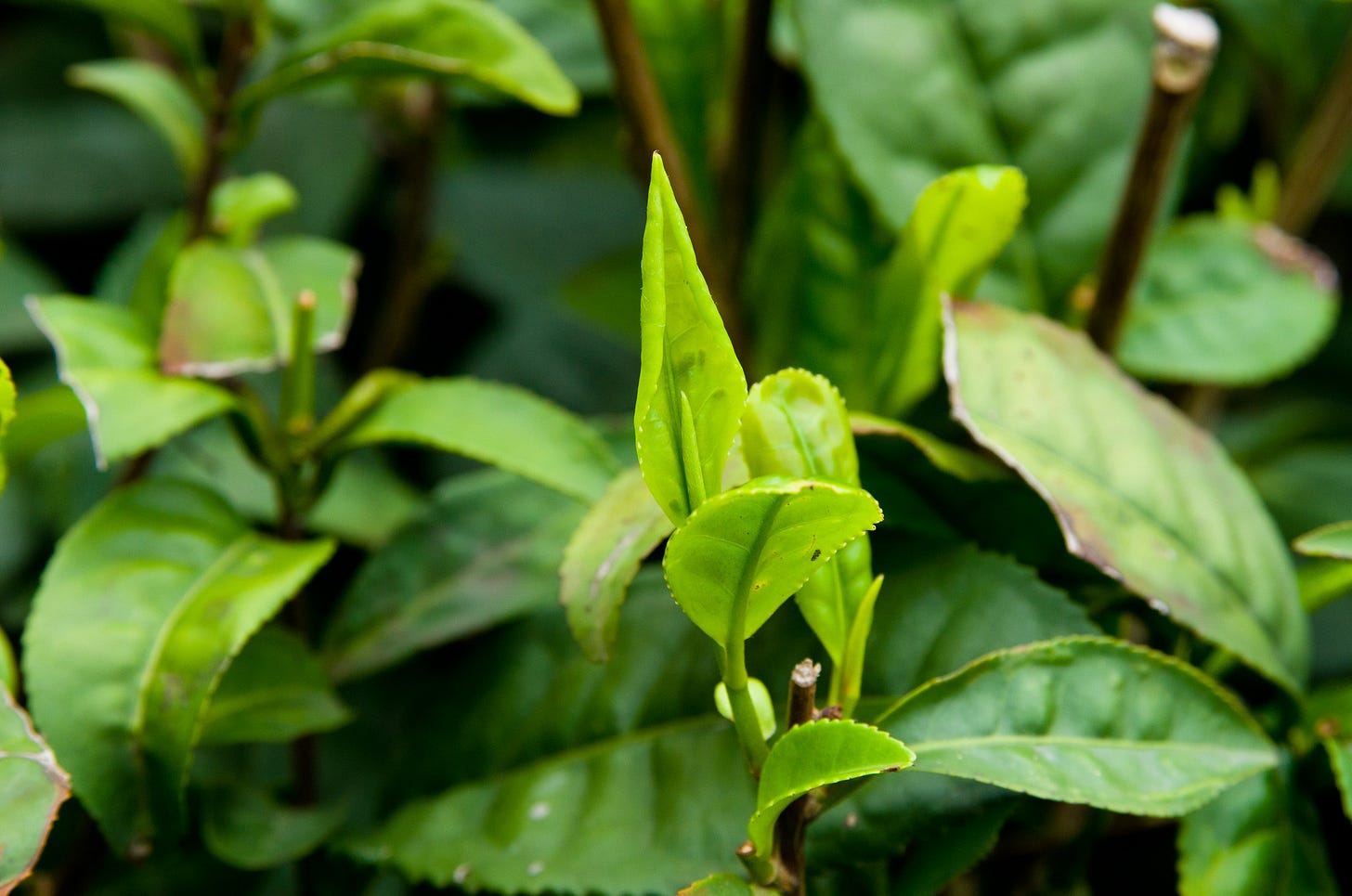Why is it so hard to find good green tea?
Green snails from Taiwan + the business of green tea production.
A first taste of spring
The tea: Bi luo chun green tea, sold by Eco-Cha. $13 for 38g.
It’s spring harvest season, the busiest time of year for many in the tea world. Production volumes will increase as the weather warms into summer, but early spring crops are often the most valuable for farmers. Compared to later harvests, spring teas tend to be the most aromatic, with delicate yet vivid flavors. A smaller yield of premium leaf yields a premium price, providing some farms with an outsized chunk of their annual income in just a few months.
Today’s tea is one I look forward to each year: an early spring green with a buoyant, herbaceous flavor that embodies the energy of the season. Taiwan is a region preoccupied with oolong and black tea production. However the Sanxia district near Taipei is known for this fun variety, a nectar-sweet and subtly umami tea that I think punches above its weight. It’s made in the bi luo chun style (literally “green snail spring”), a popular green from China, though with larger leaves, looser rolling, and a gentler price than high end versions on the mainland. I love the thick, almost slippery texture and light, refreshing finish. This year’s harvest gives me notes of sage and ripe melon.
The source: We talked about Eco-Cha in Leafhopper’s early days. As this newsletter matures and I inevitably start repeating vendors, I’ll link to previous editions featuring their brews to help fill out your order. This specific bi luo chun hails from Eco-Cha’s monthly tea club; founder Andy Kincart graciously provided me a free subscription. For $35 (including shipping), members get 75 grams of tea per month with an additional sample. That’s enough for about 15 sessions, and selections come with sourcing and tasting blog posts and videos to provide a fuller view of what you’re drinking. If you want to explore Taiwanese tea and are open to variety, I consider Andy an excellent guide and this subscription a good deal.
To brew: Green teas are the only kind that I don’t brew with boiling water by default, as higher temperatures extract more polyphenols and catechins in the leaves. These are some of the compounds that give green tea its purported health benefits, but they also release bitter and astringent flavors that can overwhelm a tea’s subtle sweetness. Don’t worry about a fancy kettle that heats water to specific temperatures. If you pour boiling water into a small pitcher or coffee creamer, you’ll lower its temperature down to 85 or 90 degrees Celsius. By the time you decant this water over the leaves, it’ll have cooled down to a temperature appropriate for most green teas. You can also brew this tea with cold or room temperature water for an even sweeter, more refreshing brew, though with a comparatively subdued aroma.
I don’t get too picky about dosage for Chinese style greens. 2 to 3 grams in a 150 milliliter pot steeped for 30 to 60 seconds is a good start, and 8 to 10 grams is sufficient for a liter of cold brew. Most casual green tea drinkers brew their leaves in the same cup they drink from, topping off with more water as they go. The flavor will get stronger and the body less limber, but when the leaves are good quality, the tea can take it.
Where are all the good greens?
As someone who doesn’t drink many green teas, I have a simple barometer for what indicates a nice one. You know that cheerful spring in your step you get after having good sex, as if gravity can’t hold you down? That’s what I want from my greens. (For the purposes of this article, I’m excluding roasted greens like hojicha or genmaicha that come from larger, late harvest leaves. Those engender a different, mellower mood.) Green teas made from tiny leaves and buds taste like spring, and spring is the season of sex, when plants open their flowers and animals mount one another to satisfy ancient, hardwired drives. A good green tea is a wellspring—of energy, of renewal, and of the ephemeral nature of young, tender growth.
Green teas like Eco-Cha’s bi luo chun are light in flavor but well endowed with texture. They feel hydrating beyond the water within them; my lips plump up as if graced by the finest Korean skin creams. Once the tea is gone, a crisp, upbeat impression remains. For a little while, anyway. Green teas don’t hold up to as many steeps as other styles like oolongs. Nor do they remain at their peak as long. While many teas can—and should—be rested for months or years after processing, green teas are best brewed as close to harvest as possible. You can keep them around for a year or two and still enjoy a good drink, but the vitality isn’t the same.
Producers in Japan get around this issue by locking green tea leaves in nitrogen flushed cold storage, the same way apple and onion growers keep their crops fresh year-round. Yet even in an industry where time can be made to stand still, shincha—the year’s first harvest of sencha—skips this suspended animation to be shipped to shops and drinkers right away, while it’s bristling with new energy. In China, tea people make a big deal about green teas harvested before the Qing Ming tomb sweeping festival. This holiday that honors dead elders often accompanies spring downpours. Powered up with unlimited water, the tea plants speed up their growth and yield, literally watering down the flavor of the plucked tea leaves. The volatile burst of brightness that accompanies mingqian (pre-Qing Ming) teas is due in part to the plants’ greater thirst.
There’s a lot of green tea out there, and plenty of it is good and tasty, but true springtime succor can be frustrating to find. Here are some reasons why, and ways to quench your own thirst.
Keep reading with a 7-day free trial
Subscribe to Leafhopper to keep reading this post and get 7 days of free access to the full post archives.







